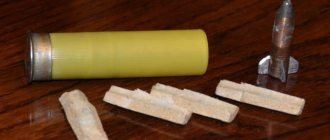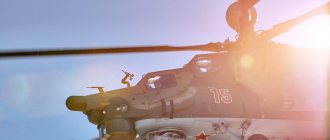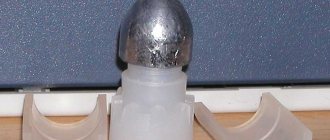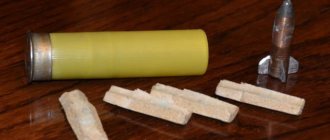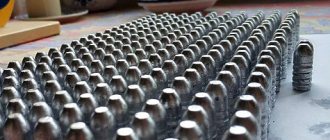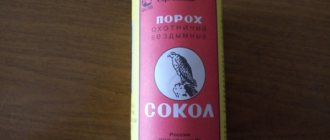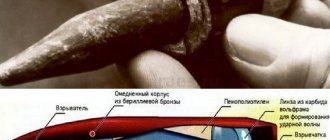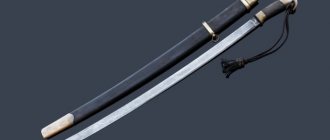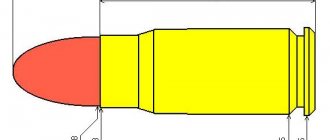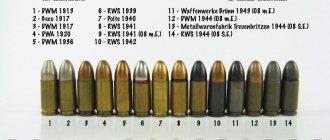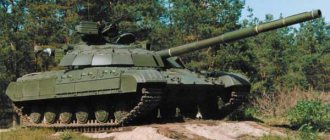Rubber bullets are one of 75 types of “less-lethal devices” designed to deliver a shock that incapacitates but does not kill or penetrate flesh like regular metal bullets do.
These are rubber-coated projectiles fired from standard firearms or specially designed assault rifles. Rubber bullets are often used for animal control or crowd control. They are intended to be a less dangerous alternative to traditional ammunition to keep someone at bay without causing them serious harm.
Traumatic cartridges with rubber buckshot
Good quality ammunition ensures trouble-free operation of the reloading mechanisms of domestic and foreign-made weapons in a wide temperature range. Stable characteristics of cartridges over a wide range of operating temperatures are ensured by the use of special grades of rubber mixture used for the manufacture of bullets.
High stability of the ballistic characteristics of cartridges is ensured by the selection of optimal equipment parameters and multi-stage control at all stages of production. Summary table for an overview of products meeting these specifications:
| Name | Caliber | Bullet speed m/s at a distance of 3.5m | Muzzle energy | Features of the bullet |
| Record LLC, buckshot | 12 | 280 | 98.32J | The bullet was cast with defects. It is prohibited to use cartridges at a distance of less than 10 m. |
| NVP "Ecologist", buckshot | 12 | 280 | 100.19J | The gunpowder is fine. The wads are greasy. It is prohibited to use cartridges at a distance of less than 5 m. |
| Barrier LLC, buckshot | 12 | 280 | 100.01 J | The sleeve is imported. Good quality. Shooting at a distance no closer than 10 m. |
The standard amount of ammunition in the box is 24 pieces. Consumer reviews of the 12-gauge buckshot variant are mixed. There is weak power during the shot if you purchase a domestic product.
Rubber bullet designs
Rubber bullets vary in caliber and design. There are the following types of projectile designs for injuries:
- Cast. Typically, these rubber bullets are shaped like a ball or a cylinder. They are made from rubber with medium hardness. Also popular manufacturing materials are plastic and polyvinyl chloride. When compared to solid core projectiles, cast bullets are safer when used at short ranges. But they can ricochet when colliding with some obstacles.
- With a solid core. Such rubber bullets are most often equipped with a metal core. They have greater accuracy than cast ones and increased stopping power. Projectiles with a rigid tip have more weight, and therefore greater inertia. They also have higher penetration power.
- Shells stuffed with rubber buckshot. They consist of a sleeve containing two or more rubber balls.
There are also traumatic bullets of special designs.
Traumatic cartridges with rubber bullets
The bullet used to load a traumatic weapon for self-defense cannot cause serious injuries if the shot is not fired at point-blank range. The ammunition may not have buckshot inside, but several balls of pressed raw materials. If you shoot from a decent distance, then the threat to life is completely eliminated. Rubber bullet ammunition may contain two to four pellets, depending on the manufacturer. The average bullet weight does not exceed 4 g. Most shooters consider buckshot to be a more effective ammunition compared to rubber bullets.
| Name | Caliber | Bullet speed m/s at a distance of 3.5m | Muzzle energy | Features of the bullet |
| NVP "Ecologist" | 12 | 140 | 82.32J | The bullet was cast with defects. It is prohibited to use ammunition at a distance of less than 20 m. |
| Tekhkrim LLC | 12 | 140 | 79.32 J | Each bullet contains three rubber balls. It is prohibited to use closer than 10 m. |
| Barrier LLC | 12 | 140 | 83.99 J | The sleeve is imported. The quality is high. Shooting at a distance of no closer than 10 m. Bestseller. |
The main problem with “rubber cartridges” is the unpredictable power of the shot.
Due to the weak weight, which is uncharacteristic for use in such weapons. The use of such products by experienced shooters is not recommended due to the rather weak effectiveness of the ammunition. Rubber shot has its advantages. During firing, the weapon does not create serious noise, unlike buckshot.
Types of rubber bullets and calibers
Cartridges for traumatic weapons, like others, are divided into calibers:
- 9mm R.A. (9x22, read as "9 Peh A").
- 10x22T.
- 380 GUM.
- 10x32T.
- 13x45T.
- 18x45T.
- 12/35.
- 45 Rubber.
- 10x28T.
- 410×45 Rubber.
- 11.43x32.
- 10x23T (only for business PCs).
Cartridges 9mm Pe A., 10x22T, 230 GUM, 10x32T and 10x23T include a striking part - a dense rubber bullet with a diameter of 10 mm and a weight of 0.66 g to 1 g.
In this video you can see how the PMR is fired with MAC and Blanc traumatic cartridges
Traumatic cartridges come complete with cartridge cases, which can be made of various materials.
Cartridges with a 10mm rubber projectile have three types of cartridge cases. Let's compare them using a table.
| Name | Calibers | Peculiarities | Key Benefits | Flaws |
| Bimetallic | 9mm R.A., 10x22T, 10x23T, 380 GUM | Bimetallic cartridges are quite durable, but are characterized by strong residual deformation, which prevents the projectile from being removed from the chamber when the trigger is pulled. For this reason, cartridges with this type of case are not particularly powerful. Some bimetallic sleeves include large amounts of copper. Because of this, they are less durable, but more flexible and ductile. Such shells perform very well in some types of weapons, while in others they explode. |
|
|
| Brass | 9mm R.A., 10x22T, 380 GUM, 12x35, 45 Rubber | Brass sleeves are characterized by excellent ductility. Thanks to this, they exit the chamber well and fire a powerful shot. However, these products swell and rupture. Because of this, there is a high risk of spontaneous firing of a projectile in the weapon’s magazine, subject to early rollback. |
|
|
| Steel | 9mm R.A., 10x32T, 10x28T, 11.43x32T | Steel cases are projectiles made of steel alloys with a predominant amount of steel. They are best suited for large powder loads. However, steel casings do not work well in guns with chambers that are not clean or chrome-plated. |
|
|
Also, such cartridges are divided into groups according to the type of igniter primer:
- Berdan capsule. Modern Berdan triggers resemble capsules of the Luminello system; the capsule is inserted into a special housing from below, where it is slightly below the bottom to be protected from impacts. Inside the body, the brass bottom forms a surface called the "anvil" that abuts the center of the capsule, and two small holes (one on each side of the anvil) called "flash holes" that allow the ignition flame to reach the inside of the cartridge body. Such products are characterized by excellent resistance to accidental punctures. Their disadvantage is that they rust the weapon with burnt composition.
- Boxer capsule. Boxer triggers are similar to Berdan triggers with one fundamental difference - the position of the anvil. In fact, in the Boxer, the anvil is a body-shaped relief, separate from the cartridge body. It is recessed into a housing that contains only one large one. This arrangement does not provide any ballistic advantage, but does make it easier to remove the capsule for reloading spent cartridges by inserting the tip from the inside of the cartridge body into the flash hole. The new anvil capsule is then placed under pressure using a press.
The best 12 gauge bullets
Polev's bullet
The Polev bullet is the most popular hunting bullet in the countries of the former Soviet Union. Created in the 1980s in the USSR. There are several varieties of Polev bullets for smoothbore weapons of different calibers, these are bullets such as: Polev 1 bullet, Polev 2 bullet, Polev 3 bullet, Polev 6 bullet, Polev 6U bullet. All Polev bullets are sub-caliber lead pointer bullets with a plastic shank and a plastic container. Polev's bullets have good accuracy at long distances. Polev's bullets, when fired through thickets of bushes and reeds, tend to deviate when hitting obstacles. Polev bullets are used for hunting large animals: bear, wild boar, elk.
You can read more about the Polev bullet, types, types, and use in hunting in our article: Polev Bullet
Bullet Leningradka L-2
The Leningradka L-2 bullet is a sub-caliber coil bullet. The Leningradka L-2 bullet is made of steel and does not deform when it hits the target. The bullet is placed in a polyethylene container consisting of four petals and having eight guide stiffeners. The bullet in the container is able to safely overcome the muzzle constriction of 1.0 mm. The bullet is characterized by high speed and flight stability, good accuracy and accuracy. Allows shooting at distances of up to 75-10 meters, including in bushes and reeds. Thanks to its high stopping power, it can be used for hunting large and hard-to-wound animals: bear, wolf, elk. Bullet weight: 28 gr.
Bullet Sport-S
The Sport-S bullet is a sub-caliber round lead bullet. The Sport-S bullet is used for training in shooting bullet cartridges, training and amateur shooting, and can also be used for hunting in open areas at short distances. The bullet is compatible with any choke. Bullet weight: 27 gr.
Bullet Ball
A bullet ball is a lead ball of a certain diameter. The Shar bullet is the oldest type of bullet for firearms. The bullet exists in both caliber and sub-caliber versions. The Ball caliber bullet can only be used for shooting from guns with barrels with a cylindrical drill, since when passing through the muzzle narrowing it can jam, which will lead to swelling or even rupture of the barrel. The sub-caliber version of the bullet The ball should have a diameter 0.2 mm less than the narrowest part of the barrel. The Shar bullet, due to the simplicity of its design, can be made at home.
Bullet Sputnik
The Sputnik bullet is a sub-caliber round bullet in the form of a ball with centering bands and point tides, which fix the bullet in the center of the barrel and crumple when fired through the muzzle. The diameter of the main body of the Sputnik bullet must be at least 0.2 mm smaller than the narrowest part of the barrel. The bullet can be used for shooting from guns with choke constrictions. The bullet does not have a very high flight speed, has little stopping power, has a tendency to ricochet, and does not provide high accuracy. Bullet weight: 30 gr.
Gualandi bullet
The Gualandi bullet is a arrow-turbine penetrating non-expansive bullet. The Gualandi pool has a heavy lead head and a lightweight plastic shank seal. The lead head of the bullet has two special beveled ribs on the sides, the purpose of these ribs is to give the bullet axial rotation when leaving the gun barrel. The bullet head also has two leading crimp bands, one at the base of the bullet, the second slightly higher. When a bullet passes through the barrel, these bands are crushed and ensure the centering of the bullet in the barrel. Thanks to the use of these belts in the design of the bullet, it is possible to use Gualandi bullets on shotgun choke tubes right up to the choke. The Gualandi bullet is a penetrating bullet, so the tip of the bullet has a cone-shaped cut rather than an expansive funnel. When the bullet hits the target, it is deformed, preventing the bullet from piercing the animal’s body, which gives a good stopping effect. The Gualandi bullet can be used for hunting wild boar, elk, and bear. Bullet weight: 32/40 gr.
You can read more about the Gualandi bullet, types, types, and use in hunting in our article: Gualandi Bullet
Bullet Tandem
The Tandem bullet is a sub-caliber steel bullet. The striking element of the bullet has the form of a steel cylinder, which is pressed into a polyethylene wad container. The polyethylene wad container is equipped with guide ribs. The bullet has a high initial speed, does not deform when it hits the target, and has high stopping power. Bullet shooting can be carried out from guns with any muzzle constriction. The bullet does not have outstanding accuracy; it is better to shoot it at short distances. The Tandem bullet can be used for hunting wild boar, elk, and bear. Bullet weight: 31 gr.
Bullet Arrow
The Strela bullet was developed at the Krasnozavodsk Chemical Plant in 1989. The bullet has a arrow head, a narrowing in the central part and six tail petals. Made from lead and has high stopping power. It is better to fire a bullet in an open space; if it hits an obstacle, the bullet can ricochet. The Arrow bullet can be used for hunting wild boar, elk, and deer. Bullet weight: 29 gr.
Bullet Diabolo
The Diabolo bullet is a cap-caliber lead bullet. The bullet was developed more than 150 years ago for air guns, and later began to be used when shooting from smoothbore guns. The Diabolo bullet provides high shot accuracy, has high stopping power, is not prone to ricochets, and is suitable for shooting from guns with any choke. The Diabolo bullet can be used for hunting wild boar, elk, and deer. Bullet weight: 32 gr.
Bullet Azot
The Azot bullet is a caliber pointer lead bullet. The head of the Azot bullet has the shape of a cylinder with a conical front part, there is a stabilizing belt in the lower part, and there are 12 guide ribs on the side surface of the bullet. The bullet is equipped with a polyethylene shank, which provides an obturation and stabilizes the bullet in flight, preventing it from tipping over and tumbling in the air. The bullet has increased speed and stability in flight, high accuracy, increased penetration and expansion, and a reduced tendency to ricochet. The Azot bullet can be used for hunting deer, roe deer, wild boar, and elk. Bullet weight: 38 gr.
Brenneke bullet
The Brenneke bullet is a caliber lead arrow-turbine bullet. The bullet was developed in Germany at the beginning of the 20th century. The Brenneke bullet has twelve longitudinally inclined guide ribs, which give it rotation when fired. At the base of the bullet there is a small leading belt, and in the nose there is an arrow aerodynamic protrusion.
The classic Brenneke bullet has a felt wad seal attached to the back of the screw; more modern models of the bullet have a plastic wad seal attached behind the head, which stabilizes the bullet in flight when fired. The Brenneke bullet has a high stopping effect and can be used to hunt any large animal: elk, wild boar, bear.
You can read more about the Brenneke bullet, types, types, and use in hunting in our article: Brenneke bullet
B&P bullet
The B&P bullet is a point-and-turbine caliber bullet developed by the Italian . The bullet consists of a lead head and a polyethylene shank seal. The head of the bullet is equipped with longitudinally inclined guide ribs, ensuring precise centering of the bullet in the barrel bore. When a bullet passes through the muzzle, the ribs are crushed without creating a danger to the barrel, which allows the bullet to be used in guns with a muzzle narrowing of up to 1 mm inclusive. In the front part of the bullet there is an expansive depression; when it hits the target, the bullet unfolds in diameter up to 35-40 mm, due to which the bullet has a greater stopping effect. The B&P bullet can be used for hunting wild boar, elk, and deer. Bullet weight: 28/32 gr.
Bullet Zala
The Zala bullet is a caliber, pointer-turbine, expansive bullet, consisting of a lead striking part and a plastic stabilizer shank. The striking lead part of the bullet has twelve inclined guide ribs, a leading belt in the lower part and a head part in the form of a truncated cone with a small expansive notch. The stabilizer shank is in the form of two truncated cones with a through hole in which the seal is placed. When the bullet hits the target it is deformed. The bullet can be used for hunting deer and roe deer at distances of up to 40-45 meters. Bullet weight: 28/32 gr.
Mayer's bullet
The Mayer bullet is a caliber turbine expansion bullet. The Mayer bullet was developed by Alexander Karlovich Mayer in 1963. The bullet body is stepped-cylindrical with a leading belt in the front part. Six external inclined ribs-blades extend from the girdle. The bullet has an internal through channel, inside of which there are six turbine blades. The outer blade fins and inner turbine blades cause the bullet to rotate in flight. When the bullet hits the target, it is highly deformed and has a high stopping effect. Designed for hunting in open areas for elk, wild boar, roe deer, and deer. Bullet weight: 34 gr.
Bullet Lee
The Lee bullet is a sub-caliber cap lead bullet, which is made by casting lead using a Lee bullet pellet. The bullet has a smooth cylindrical shape with a rounded head. The cap recess is divided by a partition, which provides the bullet with greater rigidity. When loading a Lee bullet into a cartridge, it is placed in a plastic container to be locked in the center of the barrel. The center of gravity of the bullet is shifted to its head, because of this the Lee bullet has an increased tendency to somersault in flight, reduced accuracy and a low effective firing range. Bullet weight: 28 gr.
Blondeau's bullet
The Blondeau bullet is a coil-bore steel bullet developed by the French engineer Blondeau during World War II. Blondeau's bullet is turned from steel on a lathe. The bullet has two lead leading bands, which prevent damage to the barrel and allow it to be fired from guns with barrels with choke constrictions. The Blondeau bullet allows it to be used with reinforced gunpowder charges, has a high initial velocity when fired, is stable in flight due to its shape, has a great stopping and lethal effect, but you should not expect ultra-high accuracy from it. The Blondeau bullet can be used for hunting wild boar, elk, and deer. Bullet weight: 35 gr.
Bullet Sauvestre
The Sovester bullet is a sub-caliber, pointer, expansion bullet. The Sauvestre bullet was invented by French military engineer Jean-Claude Sauvestre in 1993. The Sovester bullet consists of a metal head element and a plastic stabilizer attached to it at the back. The metal head can be made of lead or brass and has a steel core. The stabilizer has four blades slanted back, which, when loaded into a cartridge, are placed inside the powder charge. The bullet is placed in a plastic cylindrical container, which consists of two halves and has several transverse annular leading obturator belts. The inner surface of the container completely follows the shape of the bullet. The Sovester bullet has an accuracy comparable to that of a rifled weapon and is designed for shooting at a distance of 100-200 meters. The bullet has high accuracy, a flat flight path, good lethality with a relatively small stopping effect. The bullet can be used with any choke, up to full choke. The Sovester bullet is intended for hunting elk, wild boar, and roe deer. Bullet weight: 25/31 gr.
Rubeykin's bullet
The Rubeykin bullet is a sub-caliber coil bullet. The Rubeykin bullet is turned on a lathe from steel, copper, brass or bronze, and is shaped like a shot glass or a coil. There are at least three options for making the Rubeykin bullet, which differ in shape and size. When loaded into a cartridge, the Rubeykin bullet is placed in a plastic container. The Rubeykin bullet is distinguished by its ease of manufacture, good accuracy, high stopping and lethal effect, excellent penetrating ability with a low tendency to ricochet. The bullet is demanding on the quality of the container and requires careful equipment. The Rubeykin bullet is a sub-caliber bullet and its diameter is significantly smaller than any muzzle constriction, but being non-deformable it can create increased pressure in the choke and cause its damage. The Rubeykin bullet can be used for hunting elk, wild boar, and roe deer. Bullet weight: about 32 gr.
Bullet Sheddit
The Sheddit bullet is a caliber arrow-turbine bullet. The bullet consists of a lead head and a plastic stabilizer shank. The head of the bullet has ten inclined guide ribs, in the front part there is an arrow-shaped convexity, and on the lower edge of the head there is a leading belt. The stabilizer shank is pressed into the recess of the head part, the tail part of the stabilizer is a powder wad-obturator. The bullet can be used for shooting from guns with barrels with choke constrictions up to full choke. Due to its heavy weight, the bullet has a high stopping effect. The bullet can be used for shooting in bushes or reeds. Bullet weight: 43 gr.
Bullet Vyatka
The Vyatka bullet is a caliber arrow bullet, resembling a drop in appearance. The Vyatka bullet is a transitional link from round bullets to arrow bullets. The head of the bullet is made of lead, has a round front part, the rear part of the bullet is slightly tapered and has six guide ribs. A plastic shank seal is attached to the back of the head. The Vyatka bullet has a relatively low stopping effect and average accuracy. The bullet can be used for hunting roe deer, deer, and wild boar. Bullet weight: 33 gr.
To be continued
In this article, we tried to analyze the most popular myths about shotguns, and also looked at some aspects of self-defense. However, there are still plenty of such inventions, so we have something to talk about in the next issues of the magazine. As a starter, I will mention that we will check in practice whether it is possible to hide from a shot from a gun behind the lid of a dining table and a car door, whether such a shot is capable of destroying a padlock or knocking out a mortise lock, and we will also try to find out what is the maximum effective firing distance from a smoothbore gun bullets of different types - and that's not all.
Smoothbore weapons are better suited for indoor self-defense
Vitaly Pedchenko
